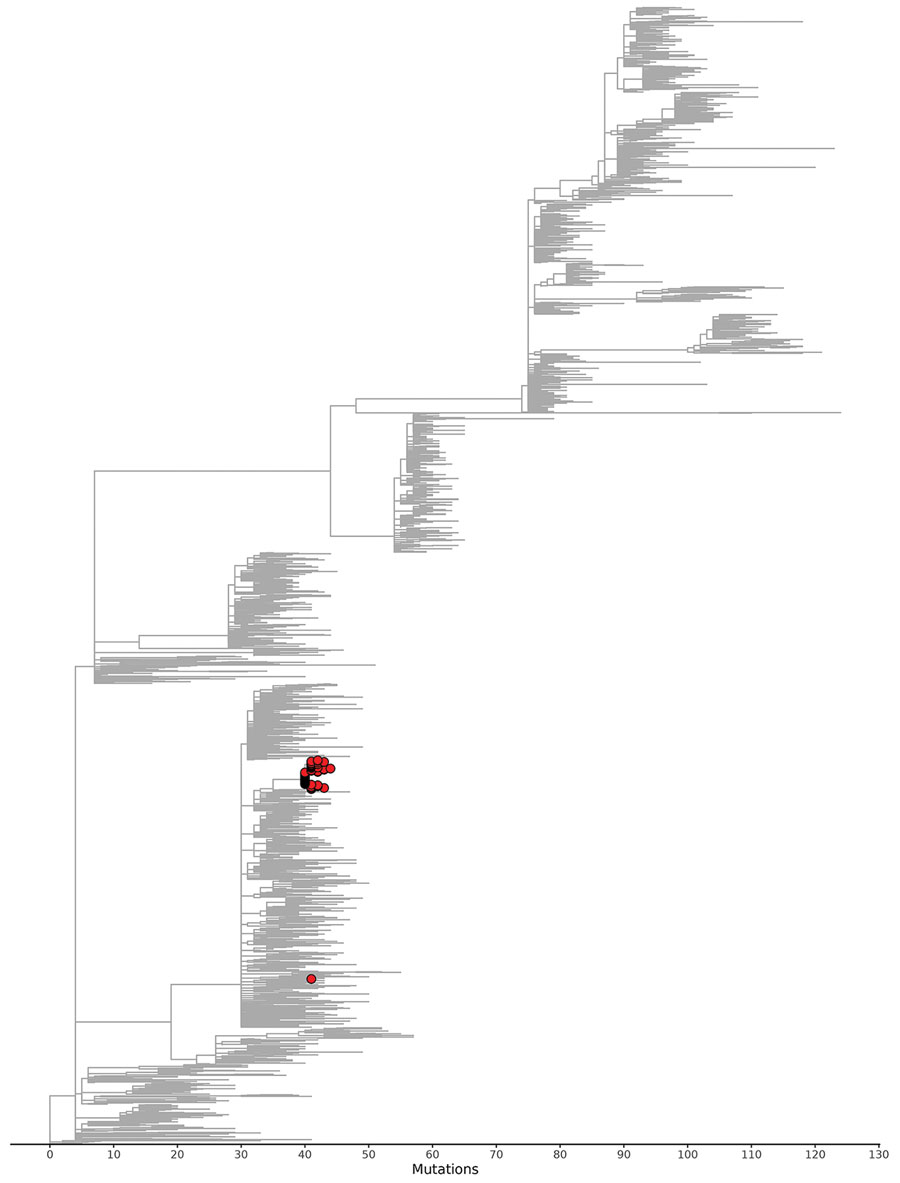Volume 30, Number 4—April 2024
Research
Bus Riding as Amplification Mechanism for SARS-CoV-2 Transmission, Germany, 20211
Figure 4

Figure 4. The subtree of the global SARS-CoV-2 phylogenetic tree in Figure 3 that contains all outbreak patient sequences contains few nonoutbreak sequences, showing that the outbreak in Hesse, Germany, 2021, was effectively contained. Three international sequences are included (2 from the United States, 1 from Austria), as well as 8 sequences that are from outside of the defined outbreak time period and 16 from outside the geographic region but still within Germany.
1Preliminary results from this study were presented at the ESCAIDE conference; November 24, 2022; Stockholm, Sweden.
2These first authors contributed equally to this article.
3These senior authors contributed equally to this article.
Page created: March 01, 2024
Page updated: March 20, 2024
Page reviewed: March 20, 2024
The conclusions, findings, and opinions expressed by authors contributing to this journal do not necessarily reflect the official position of the U.S. Department of Health and Human Services, the Public Health Service, the Centers for Disease Control and Prevention, or the authors' affiliated institutions. Use of trade names is for identification only and does not imply endorsement by any of the groups named above.